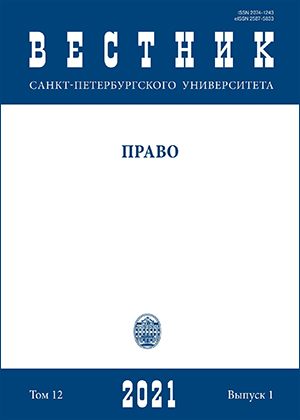Trade liberalization and trade facilitation: Two paths to one goal
DOI:
https://doi.org/10.21638/spbu14.2021.112Abstract
The article defines trade liberalization and trade facilitation, highlighting their characteristics, some of which are inherent to both processes, while others differ. The authors analyze the impact of transborder production in a number of South-East Asian states on the development of their economies, as well as the role of trade facilitation in these processes. The article dwells on the economic impact of trade liberalization and facilitation, their synergistic interaction and peculiarities from the point of view of legal regulation. The authors come to the conclusion that trade liberalization and facilitation generally aim to achieve a common goal of promoting world trade, which in the long run will help to address one of the global problems — an immense wealth gap between developed and least developed countries. To achieve this goal, both liberalization and trade facilitation use their own tools, a set of practical measures enshrined in international legal instruments. At the same time, implementation of these measures often involves major risks, especially for developing economies. As a result, a strategy for implementing trade liberalization and facilitation measures needs to be developed, which would define the sequence of steps for each state individually and would take into account all the potential difficulties that a state may have while opening up the market. It is also necessary to create and improve the relevant regulatory and institutional framework for trade relations and implementation of reforms.
Keywords:
trade liberalization, trade facilitation, protectionism, trade barriers, customs formalities, supply chains
Downloads
References
Downloads
Published
How to Cite
Issue
Section
License
Articles of "Vestnik of Saint Petersburg University. Law" are open access distributed under the terms of the License Agreement with Saint Petersburg State University, which permits to the authors unrestricted distribution and self-archiving free of charge.






